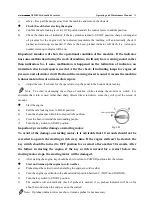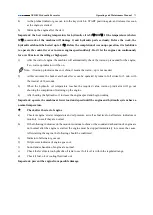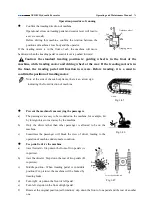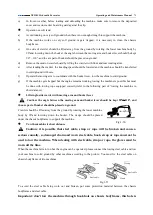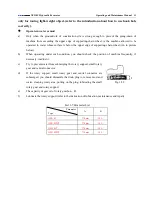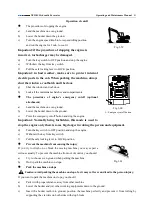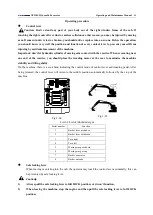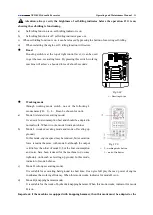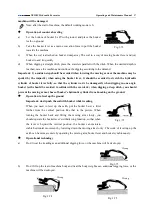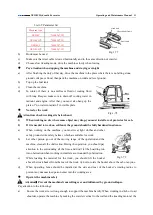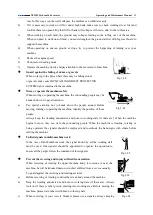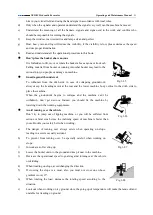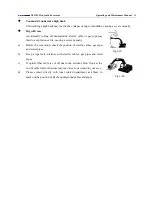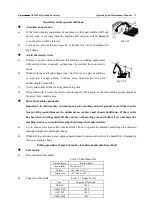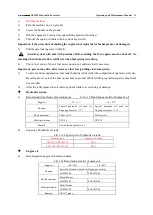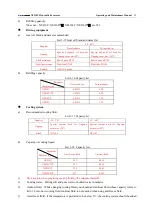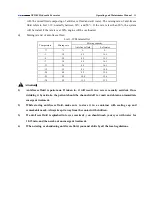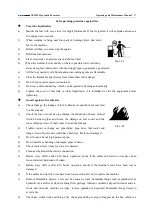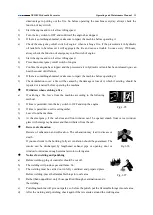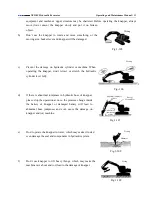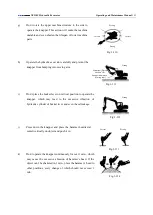
XE210C Hydraulic Excavator
Operating and Maintenance Manual
88
c)
When digging, don’t let the bucket knock the crawler. Try to place the machine on level ground,
don’t use the bucket as a hammer or pile driver, and don’t try to
move stone or crash wall through rotation.
Important: to avoid the damage on hydraulic cylinder, don’t knock or harden the ground with bucket
when the hydraulic cylinder of bucket stretches fully (the bucket withdraws fully).
d)
Every time, adjust the length and depth of excavation so that every digging can achieve a full bucket,
which will yield more than that made by fast cycle of partly filling bucket. To improve the
productivity, full-bucket should be the first target, followed by speed.
e)
Once the ditch is opened, the stone can be dug out and pulled upward the bucket from the soil layer.
It can be achieved by lifting one or two layers, the top layer is pulled out at first. Don’t let the bucket
bear the side load and level up the material by rotating the bucket or knock with the object with the
bucket from the side.
Important: don’t try to extend the bucket lever fully and abandon the bucket, don’t penetrate the
ground with bucket teeth to dig out the stone, which will lead to serious damage on machine.
f)
When the machine is driven out of the water, the incline angle of machine should is less than 15°.
Don’t submerge the machine into water whose surface is over permitted depth (normal water depth
should not exceed the upper edge of supporting-chain wheel). For those parts soaked in water for a
long time, they must be lubricated with butter till the old butter is squeezed out of the lubrication
point.
Choose suitable crawler board
Important: the crawler board may bend and (or) the screws may loose also other debarkation
parts may be demolished by using wide crawler board on uneven ground.
Don’t use wide crawler board on uneven ground full of rock, sand pile or gravel. Wide crawler board
is designed for soft ground, its screw should be checked on fixation regularly.
Use hook hole
One hook hole is made on chassis bodyframe to tow the object whose weight is listed in the table
below.
Important: while using
hook hole on chassis bodyframe
,
the following limitation and
notices
must be
identified, or the chassis bodyframe and (or) hook hole may be destroyed.
a)
The max. towing force is
:
A
。
Fig.1-76
Wrong

